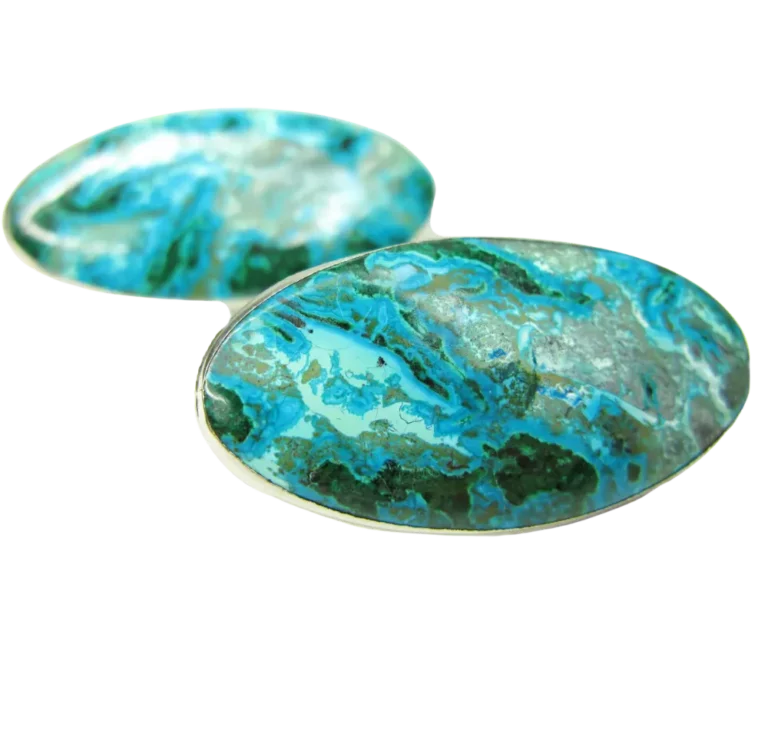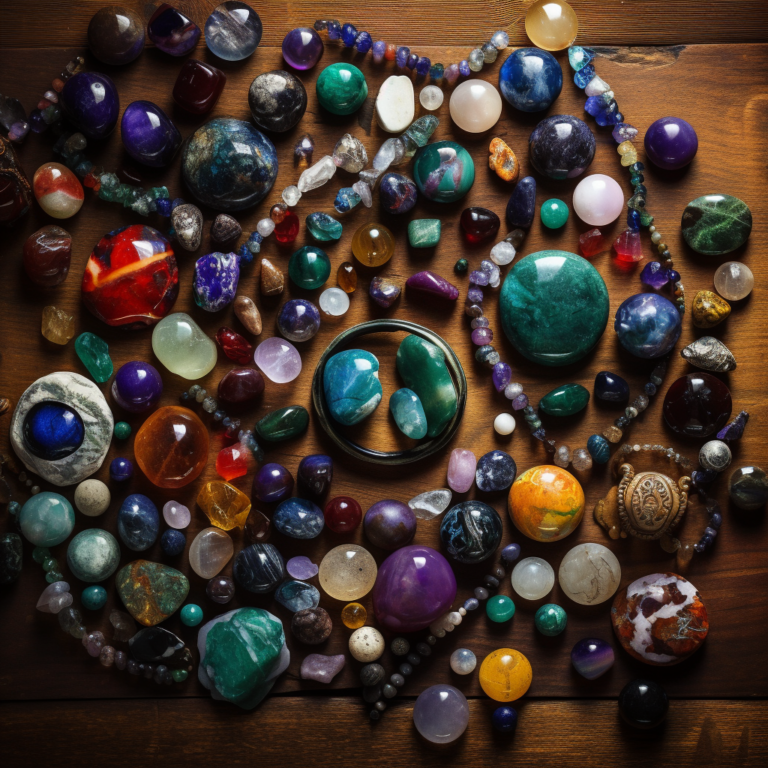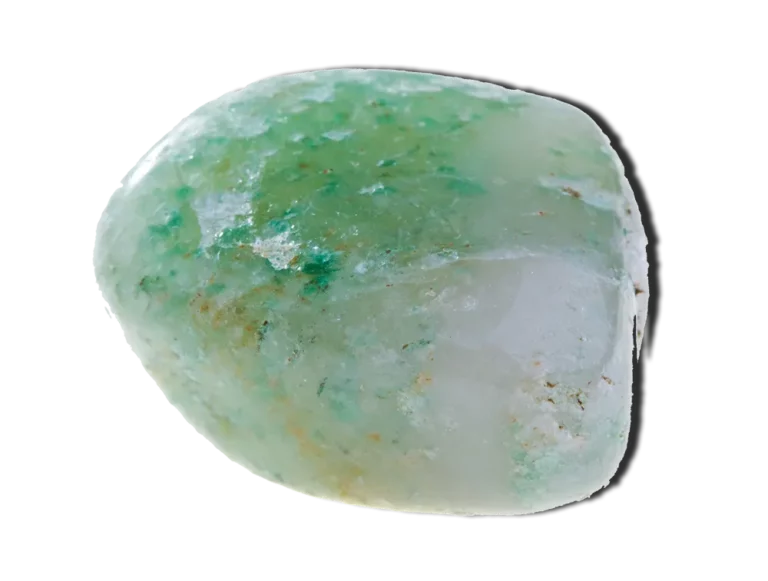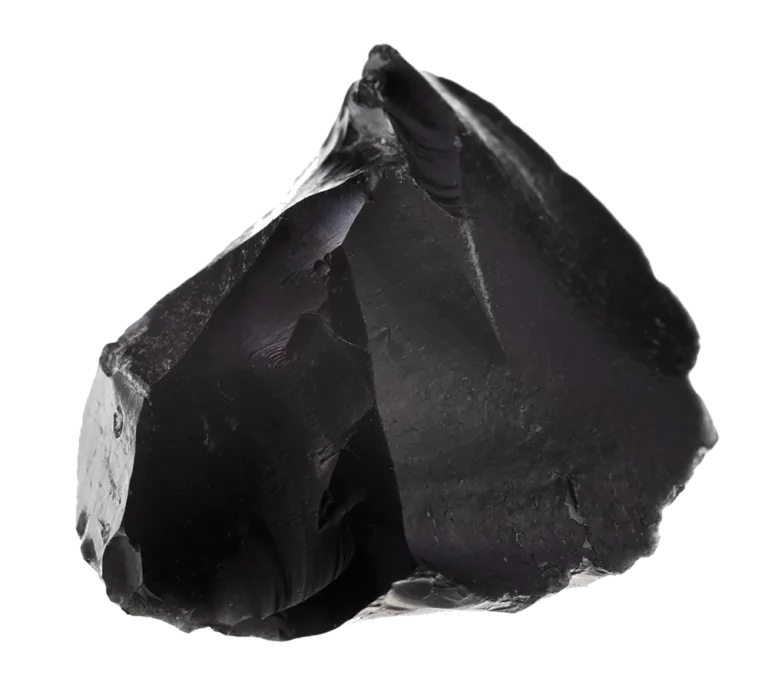Unveiling the Mystique: A Deep Dive into the World’s Rarest Gemstones
Jewels have been a symbol of affluence and artistry for countless centuries, showcasing their splendor in royal courts, high-end boutiques, and exclusive events around the globe. Among these stunning treasures, gemstones stand out with their vibrant hues, captivating clarity, and profound profundity that goes beyond their physical allure.
In This Article
A Brief Overview of Gemstones and Their Significance
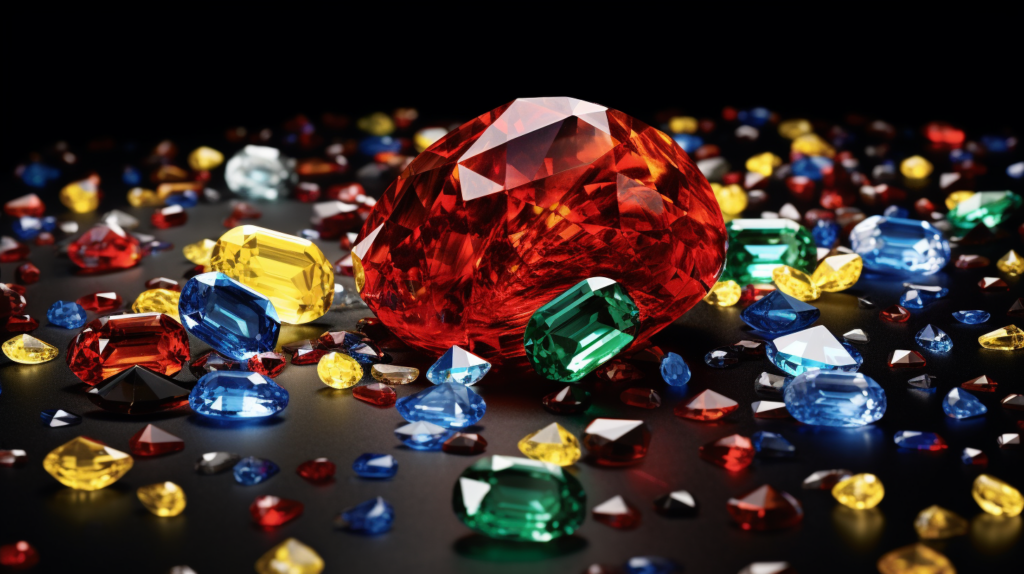
Gemstones, also known as precious or semi-precious stones, are naturally occurring minerals or rocks that are often polished and cut for use in jewelry or other decorative adornments due to their extraordinary color, lustre, durability, and rarity. These shimmering marvels appeal to our senses with their vivid colors and sparkling light, and they carry a deeper significance that resonates with our emotions, beliefs, and desires.
From the royal blue sapphires signifying nobility and wisdom, the red rubies symbolizing love and passion, to the mesmerizing green emeralds representing harmony and growth – each gemstone embodies a unique symbolism that makes it all the more precious.
The Concept of Rarity in Gemstones
A rarity in gemstones is a complex concept that extends far beyond the gem’s availability. It encompasses its distinctiveness, quality, and the lengths to which one must go to acquire it – from the remote mines in the harshest of terrains to the meticulous extraction and cutting processes that bring out its natural beauty.
The rarity of a gemstone also factors in its origin, the conditions under which it was formed, and its grading by professional organizations that assess its quality based on specific criteria like color, clarity, cut, and carat weight. The rarer a gemstone is, the more sought after it becomes, leading to a significant increase in its market value and desirability among collectors and enthusiasts.
Hence, rarity in gemstones is not just about scarcity; it’s about the convergence of exceptional beauty, superior quality, and unique origins that create a truly extraordinary jewel. And in the world of gemstones, some are rarer than others, boasting an unparalleled mystique that sets them apart from the rest. We will explore these gems in this article, taking a deep dive into their unique stories, characteristics, and the places they call home.
Understanding Gemstone Rarity

The concept of a rarity in the world of gemstones is as multifaceted as the gems themselves. Beyond the immediate idea of scarcity, several factors contribute to a gemstone’s rarity, making it a coveted symbol of status, beauty, and wealth.
The Factors Determining the Rarity of a Gemstone
Several elements contribute to a gemstone’s rarity:
Formation Conditions: Gemstones form under very specific geological conditions, requiring precise pressure, temperature, and availability of certain minerals. The precise, almost perfect conditions needed for their formation make certain gemstones extremely rare.
Geographical Distribution: Some gemstones are only found in particular geographical locations, limiting their availability.
Quality: High-quality gemstones are graded based on color, clarity, cut, and carat. If a gemstone meets all these criteria at a high level, it becomes rarer and more desired.
Perceived Value: Sometimes, a gemstone’s perceived rarity and desirability can enhance its rarity. A gemstone’s history, cultural significance, or associated myths and legends can play significant roles in its rarity.
The Role of Gemstone Mining and Extraction in Rarity
Gemstone mining and extraction profoundly impact a gemstone’s rarity. The accessibility of the mining site, difficulty in extraction, and the amount of material available for extraction all define a gemstone’s rarity.
Sites that are remote, hazardous, or politically unstable can make mining operations challenging, therefore limiting the availability of a gemstone. Additionally, gems found deep within the earth’s crust or undersea beds are harder to extract, making them rarer still.
The Impact of Gemstone Certifications and Grading Systems
The rarity of a gemstone is also influenced by its certification and grading. Professional gemstone organizations grade gemstones based on the 4Cs—color, clarity, cut, and carat weight. A gemstone that scores high in all these categories is considered rare and precious.
Some gemstones also receive certifications indicating their origin, another factor that can impact their rarity. For instance, a Kashmir Sapphire or a Burmese Ruby is exceptionally rare because of their specific origins and unique quality characteristics.
The world of gemstones is fascinating, with rarity adding an extra layer of intrigue and desire. In the next section, we explore some of the rarest gemstones on earth, their unique characteristics, and the reasons behind their rare status.
Meet the Rarest Gemstones in the World
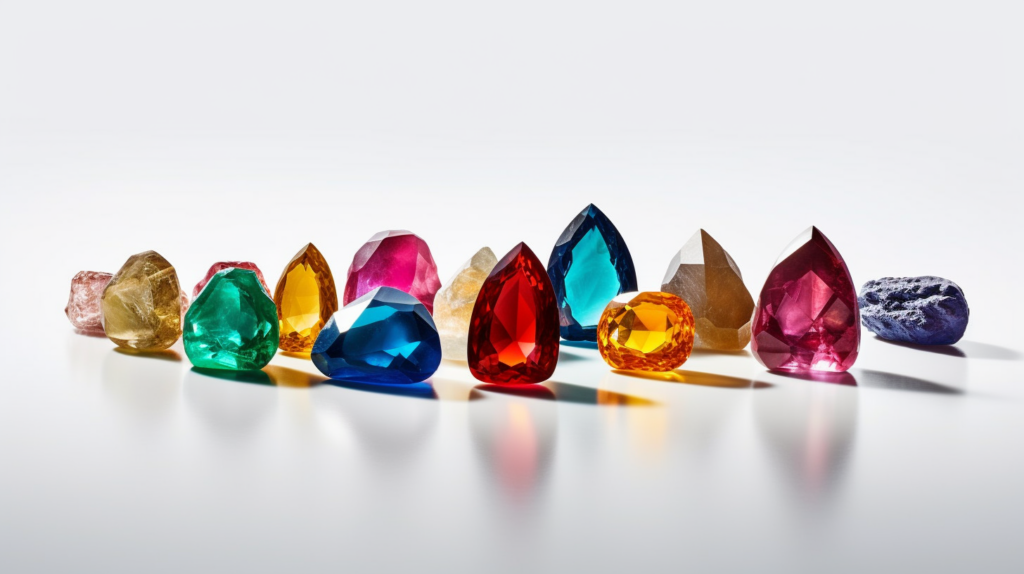
Certain gemstones stand out in the vast geological tapestry of the earth due to their extreme rarity. These are the gemstones that combine unique beauty, exceptional quality, and unique origins. Let’s embark on a journey to meet these extraordinary marvels.
Tanzanite: A Gemstone Rarer than Diamond
Found only in the Mererani Hills of Northern Tanzania, Tanzanite is an exquisite blue gemstone that sparkles with a profound depth. With its characteristic blue-purple hues, it is indeed a thousand times rarer than a diamond.
Jadeite: The Crown Jewel of Jade
While jade is relatively common, Jadeite, a particularly pure and transparent type of jade, is incredibly rare. Its emerald-green color and lustrous shine have captivated jewelry enthusiasts worldwide, making it one of the most valuable gemstones per carat.
Alexandrite: The Color-Changing Marvel
Alexandrite, named after Russian Tsar Alexander II, has a unique ability to change color under different lighting conditions, from captivating green in daylight to alluring reddish-purple under incandescent light. Its beautiful color play and limited availability make it one of the world’s rarest gemstones.
Paraiba Tourmaline: The Brazilian Beauty
Known for its striking neon blue color, Paraiba Tourmaline is a rare gem that hails from Brazil. It gets its unique color from copper, making it one of the few gemstones to have such a vivid hue.
Painite: The Formerly Rarest Gem on Earth
Until recently, Painite was the world’s rarest gemstone, with only two known specimens. Today, while a few more samples have been discovered, its deep brown to reddish-brown gems remain extremely scarce.
Benitoite: The California Blue Gemstone
Benitoite, named after San Benito County in California, where it was first discovered, is a rare blue barium titanium silicate mineral. Its intense blue color, combined with its rarity, make it a coveted collector’s gemstone.
Red Beryl: The Ruby’s Rare Cousin
Also known as the “scarlet emerald,” Red Beryl is 1,000 times rarer than gold. Its vivid raspberry-red hue is unlike anything else in the gemstone world, making it one of the rarest and most valuable gems.
Musgravite: The Elusive Gemstone
Musgravite is one of the newest and rarest gemstones, discovered only in the late 20th century. It shares many properties with Taaffeite, another rare gem, but is far less common, making it a true rarity in the gemstone world.
Stay tuned as we continue to travel through the world’s rarest gemstones, learning about their unique characteristics, origins, and the reasons behind their extraordinary rarity.
The Cultural and Historical Significance of Rare Gemstones

The allure of gemstones extends beyond their physical beauty and rarity. They are deeply woven into the cultural fabric of societies and carry rich historical narratives that add to their charm.
The Symbolic and Cultural Value of Rare Gemstones in Different Societies
In many cultures, gemstones represent status, power, and spiritual well-being. For instance, the Maasai people of East Africa value Tanzanite for its deep blue-violet color, which they associate with new life. Similarly, Jadeite, known as the “stone of heaven,” holds significant cultural value in Chinese tradition, symbolizing purity, grace, and longevity.
Paraiba Tourmaline, with its vivid neon blue hues, is considered a symbol of joy and celebration in its native Brazil. In contrast, Red Beryl, with its fiery tones, symbolizes passion and energy in many societies.
The Historical Narratives and Legends Surrounding These Gemstones
Many rare gemstones carry historical narratives and legends that enhance their allure. Alexandrite, for instance, was named after the Russian Tsar Alexander II and was said to be discovered on his birthday. The gem’s distinctive ability to change color was believed to bring good fortune and love to its wearer.
Painite holds a compelling narrative as once being the rarest gem on earth. Discovered in the 1950s in Myanmar, it was so rare that for many years, only two known specimens existed, contributing to its mystique.
Musgravite, one of the world’s newest and rarest gemstones, was first identified in 1967 in the Musgrave Range of South Australia, hence its name. Despite extensive gemological research, it remains one of the least understood gemstones, adding to its allure and mystery.
Gemstones carry significant cultural and historical significance, making them much more than beautiful adornments. They are lasting symbols of our world’s diverse cultures, histories, and values. In the next section, we will delve into the ethical concerns associated with gemstone mining and how they impact the gemstone industry.
The Ethical Concerns of Gemstone Mining
While the allure of rare gemstones is undeniable, it’s essential to shed light on the ethical concerns associated with their mining. The journey from a gemstone’s natural state to a refined piece of jewelry can sometimes involve practices that are harmful to people and the environment.
The Labor Practices in the Gemstone Industry
One of the key ethical concerns in the gemstone industry revolves around labor practices. The mining of these precious stones often happens in developing countries where labor laws may be weak or poorly enforced.
Workers in these mines can face hazardous conditions without adequate safety measures, low wages, and long working hours. Child labor is also a pressing concern in some regions.
There have been significant strides in addressing these issues through the implementation of fair trade principles and certification schemes. However, complete eradication of these issues is still a work in progress.
The Environmental Impact of Gemstone Extraction
Mining gemstones also has significant environmental impacts. It involves extracting minerals from the earth, which can lead to land degradation, loss of biodiversity, and pollution of water sources with chemicals used in the process.
Moreover, the rarity of certain gemstones means that vast amounts of rock and soil need to be excavated for a relatively small yield of the gem, further exacerbating the environmental costs of mining.
Initiatives such as sustainable mining practices, reclamation of mined lands, and the use of environmentally friendly mining technologies are gradually being adopted to mitigate these impacts.
The ethical concerns of gemstone mining underscore the need for responsible sourcing and sustainable practices in the gemstone industry. As consumers become more aware, the demand for ethically sourced and environmentally friendly gemstones is growing, shaping the future of rare gems. In the following section, we will explore this future and how innovation and change are shaping the world of rare gemstones.
The Future of Rare Gemstones
The future of rare gemstones is as dynamic and incredibly varied as the gems themselves, influenced by new discoveries, technological advancements, and shifting consumer preferences.
Potential for New Discoveries and Innovations in the Gemstone Industry
Despite centuries of exploration, the earth continues to surprise us with new gemstone discoveries. For instance, Musgravite, one of the world’s rarest gems, was only identified in the late 20th century.
Technological advancements also hold promises for the future of rare gemstones. Modern mining technologies can access previously unreachable depths, potentially uncovering new gemstone deposits. Similarly, advanced gemological equipment can better identify and grade gemstones, ensuring their quality and authenticity.
Advancements in gemstone treatment techniques can also improve the appearance and durability of gemstones, making previously overlooked gemstones more desirable.
The Influence of Synthetic Gemstones on the Rarity of Natural Gems
The rise of synthetic gemstones presents another interesting development for the future of rare gemstones. Lab-grown gems, which replicate the physical and chemical properties of natural gemstones, are becoming increasingly popular due to their lower cost, ethical production methods, and consistent quality.
However, this doesn’t necessarily diminish the value of natural gems. For many consumers and collectors, the true allure of a gemstone lies in its natural origin and the unique characteristics that cannot be replicated in a lab. Thus, the rarity of natural gemstones continues to hold significant value.
Looking ahead, the future of rare gemstones is likely to be influenced by a combination of continued exploration, technological progress, ethical considerations, and evolving consumer preferences. As we conclude this journey into the world of rare gemstones, let’s reflect on the powerful allure of these geological wonders and the ongoing quest for rarity.
Summary Of Discussion
The world of gemstones is a tapestry of vibrant colors, extraordinary qualities, and intricate narratives that span cultures, histories, and geographies. The allure of these geological marvels lies in their beauty, but their true fascination is magnified by their rarity.
Each rare gemstone is a marvel of nature, a symbol of the earth’s geologic history and the incredible conditions that allow such beauty to form. From the deep blue Tanzanite of Tanzania, the color-changing Alexandrite, to the elusive Musgravite, each gemstone holds a unique allure that transcends their physical attributes.
Yet, as we’ve explored, the rarity of gemstones is not without its ethical concerns. From the labor practices in mining to the environmental impact of extraction, it’s essential that the gemstone industry prioritizes sustainable and ethical practices. With consumers becoming increasingly conscious of these issues, the demand for ethically sourced gemstones is set to grow.
The future of rare gemstones looks promising, guided by new discoveries, technological advancements, and a greater emphasis on ethics and sustainability. For enthusiasts, collectors, jewelers, and consumers alike, the enduring allure of the world’s rarest gemstones remains undiminished.
As we continue to uncover the mysteries of these rare gems, we remain fascinated by their stories, their origins, and the incredible journey they undertake from the depths of the earth to the spotlight of exquisite jewelry displays. The quest for rarity in gemstones remains an enduring pursuit, a testament to our inherent desire for beauty, quality, and the extraordinary.
Frequently Asked Questions (FAQs)
What are some of the rarest gemstones in the world?
Some of the world’s rarest gemstones include Tanzanite, Jadeite, Alexandrite, Paraiba Tourmaline, Painite, Benitoite, Red Beryl, Musgravite, Kashmir Sapphire, Natural Pearl, Grandidierite, Poudretteite, Jeremejevite, and Demantoid Garnet. Each gemstone is unique and possesses its own distinctive qualities.
Why are there ethical concerns with gemstone mining?
Ethical concerns with gemstone mining revolve largely around the labor practices and the environmental impact. Some gemstone mines are known to employ workers in hazardous conditions, often for minimal wages. Additionally, the process of mining and extraction can result in significant environmental damage, leading to concerns over sustainability and conservation.
How does the introduction of synthetic gemstones impact the rarity of natural gems?
The introduction of synthetic gemstones can potentially alter the perceived rarity of natural gems. As synthetic gems can be produced in laboratories with relative ease and in large quantities, they offer a less rare but similar-looking alternative to natural gems. However, for gemstone collectors and enthusiasts, the allure of natural gems and their rarity remains largely undiminished.
What is the cultural and historical significance of rare gemstones?
Throughout history, rare gemstones have held significant cultural and symbolic value across different societies. They have often been associated with wealth, power, and spiritual significance. Many of these gemstones are surrounded by fascinating narratives and legends, further enhancing their allure and mystique.


